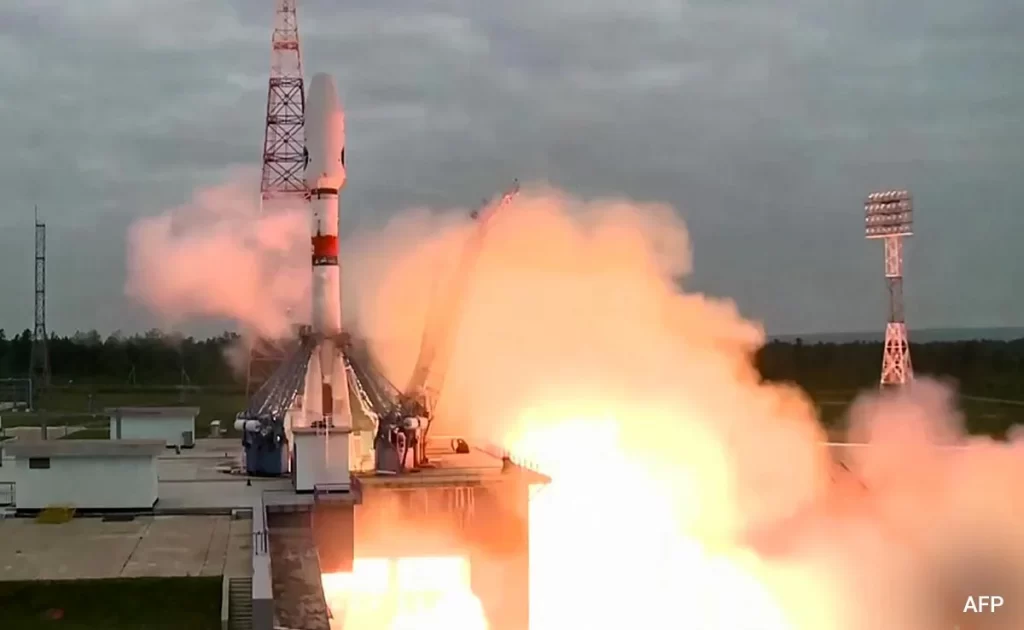Russia’s space ambitions faced a setback when its Luna-25 lander crashed into the lunar surface, dashing hopes of a historic landing attempt on the Moon’s south pole. The failure of Luna-25 marks Russia’s first lunar mission in nearly half a century, and the ramifications extend beyond the realms of space exploration.
The news that Luna-25 had failed came as a shock to Russia’s space agency, Roscosmos, which had been working to show its fortitude and development in the face of international space sector sanctions resulting from its conflict in Ukraine. The lunar mission was viewed as a chance for Russia to reassert its dominance on the international stage and its capacity to overcome geopolitical obstacles.
Roscosmos head Yury Borisov revealed that an engine failure was the likely cause of Luna-25’s crash. The intended engine burn for a successful lunar landing had been thoroughly tested in ground simulations. However, as the spacecraft neared its destination, a deviation from the planned course occurred. The engines, meant to course-correct and guide the lander to its pre-landing orbit, malfunctioned and worked for a longer duration than anticipated. This unplanned engine burn caused the spacecraft’s crash, thwarting Russia’s bid to make history.
The failure raises questions about the technological readiness of Russia’s space program, which had experienced a near 50-year hiatus in lunar exploration. Borisov acknowledged that this prolonged gap in lunar endeavors contributed to the challenge of re-mastering the necessary technologies at a higher technical level. However, he expressed optimism in the value of the data collected from Luna-25’s failed mission, suggesting that the insights gained would aid in ensuring the success of future lunar missions, particularly Luna-26.
The lunar south pole has emerged as a focus for leading space agencies like NASA, Roscosmos, and China’s space administration due to its potential to harbor water ice within shadowed craters and lunar soil. With Luna-25’s mission unsuccessful, India’s Chandrayaan-3 lander has the chance to become the first to make a soft landing on the lunar south pole.
In response to the setback, Roscosmos has initiated a comprehensive investigation into the engine burn failure. Additionally, the agency is expediting work on its upcoming lunar missions, Luna-26 and Luna-27, leveraging the lessons learned from Luna-25’s mishap.
While the crash of Luna-25 presents a temporary setback for Russia’s space aspirations, it underscores the challenges and complexities inherent in space exploration. As nations vie to uncover the Moon’s mysteries and expand human knowledge, setbacks serve as important reminders of the tenacity required to venture into the cosmos. The failure of Luna-25, while disappointing, may well pave the way for more successful endeavors in the future, fueled by the determination to learn, adapt, and conquer the challenges of space exploration.

